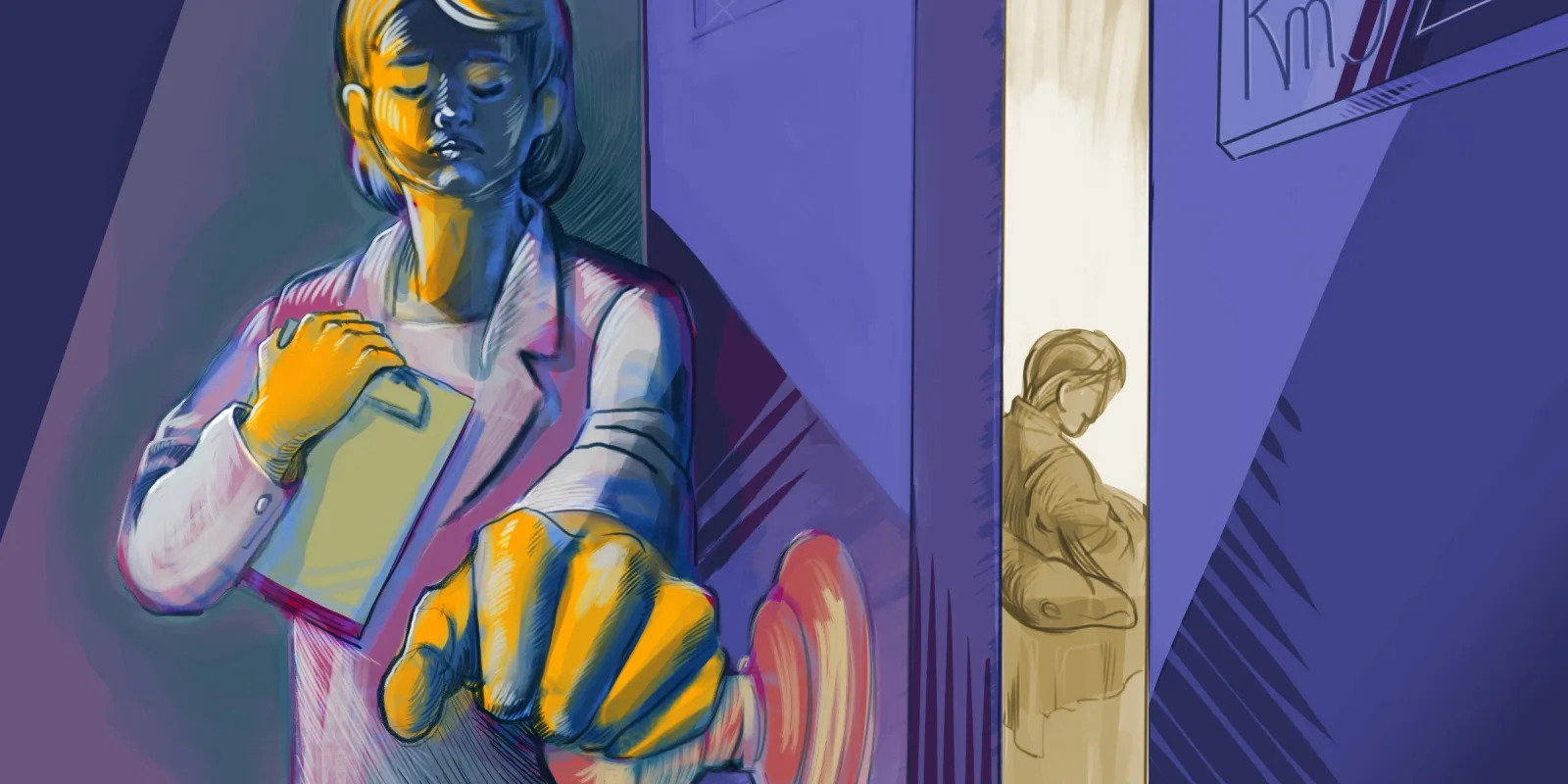We all have patients whose stories stick. Our experience in caring for them — pride in their successes, regret in our failures — imprint on us. Sometimes there is a patient whose life story speaks out loud. This is one of those patients. I remember how much she upset my staff, which room we met in, the way she avoided eye contact, how she struggled to establish control in a world where she had wielded little.
She was 20 years old, and I was a new attending, trained in female pelvic medicine and reconstructive surgery. The visit was an ER follow up for pelvic pain. She had a long history of asking for pain medication, PTSD, multiple ER visits, CT scans, psychology consults, and gynecologist and urologist visits.
Upon our first meeting, she used her story as a weapon — she met my gaze and evaluated my strength as she told it. She was abused by her stepfather in infancy, then concurrently by an uncle in her pre-teen years. Her mother was cognizant of this and failed to protect her, subsequently sent her to an inpatient psychiatric facility. It was in this setting, in the fog of psychiatric medications, she developed pelvic pain and difficulty urinating. The assessments during this time were not available for review, but the conclusion was clear.
“They told me it was all in my head.”
We employed a combination of strategies to make her feel in control. We diagnosed atonic bladder by urodynamics and offered self-catheterization. We noted asymmetric bilateral gluteal and calf atrophy and an altered gait, perineal numbness, and constipation, and booked her for MRI of the spine.
She no-showed. I called. We rescheduled. She skipped. I left a message. Nothing. I sent a certified letter. And another. And she was gone.
A year later the ER paged. She was 20 weeks pregnant with bilateral hydronephrosis and a febrile UTI. She was happy to see me and somehow our trust kicked into stride. She had her MRI prior to discharge, and was diagnosed with a tethered spinal cord. She started self-catheterizing and underwent surgical detethering at 22 weeks’ gestation.
The thing was, the tethered spinal cord would have been obvious if it hadn’t been for the psychological distractions. Her behavior was jarring, but she was also brilliant and likable once her personality emerged. I admired her strength beyond that of most, as she mothered her child, reconciled a form of relationship with her mother, and forged her way. I’ve always said, “it is not what you do in life, but what you do with what you are given that is impressive.”
This now-special patient of mine, whose pelvic pain was under control, eventually made a violent attempt on her life. The next time I saw her, her strength still showed through her newly disfigured face.
We, as a profession, missed the mark in this young woman for years. Why? The difficult patient creates a reaction. We all, as clinicians, love the satisfaction of making the diagnosis, finding a solution, and being — to some extent — a hero. There is an ego boost in helping people. But along with this hero complex comes the converse: failed interventions weigh heavily, and when patients return not any better, it is frustrating. We apply defense mechanisms variably — and unknowingly — in the face of challenge, and training for clinicians does not address how to manage our internal reactions the way training does for our colleagues in psychology.
So what is the right path with a difficult patient? Or simply a pelvic pain patient whose diagnosis is difficult? Anyone who has had a feeling in the pit of their stomach knows the mind-body connection is real: there is always going to be an emotional component to pain. So why is this “it is psychological” write-off a common experience for our patients? Did our patient above really see dozens of bad clinicians?
Of course not. Ultimately, there are skills to apply to difficult patients and difficult diagnoses. The first step is to gauge our reactions. Are we hungry? Distracted? Offended? Overwhelmed? And if so, what are the options? If the patient is acting out, what is their driver? Most often, it is a need to be in control.
If the patient is not dangerous, it almost always helps to sit down, thereby removing barriers and allowing the patient some semblance of control. Say to the patient, “this is a difficult problem you have, and I am going to let you determine what happens during our visits. Before we get started, I need to tell you: if you are upset, you cannot take it out on my staff. Now let’s see if we can help you.” Stepping out of the room is a great next step if this is not successful. With the advent of virtual visits, it is an option to regroup and review, scheduling an early follow-up. We can, even now, charge for time spent on record review. In the worst-case scenarios, hospital administration can help.
With complex pain patients, we can almost always help by validating, organizing the team and the data, and (like in my anecdote) directing a selection of referrals. It is our colleagues who get us through and who protect us in serving the needs of our patients. We succeed in tandem — not as independent agents — expressing gratitude to those whose work augments our ability to help, whose collective knowledge and strength take over where ours fails.
When at a brick wall with a complex pelvic pain patient, it often works to turn away from the notes and ask, “you know what? Let’s take a fresh look. Tell me the story of your pain, start to finish, in five minutes. And if it's OK with you, let me repeat a brief exam.” I am certain if someone had allowed a clean slate with our patient, they too would have found the diagnosis.
How have you dealt with difficult patients in the past? Share your methods with your colleagues below.
Elise De, MD is Co-Editor of Facing Pelvic Pain, a one-stop multidisciplinary resource for people with pelvic pain, and those who care for them. She is Associate Professor of Surgery, Harvard Medical School, Department of Urology, FPMRS, Massachusetts General Hospital, Chair of the Education Committee of the International Continence Society, and mother of two witty teenagers.
Illustration by April Brust







